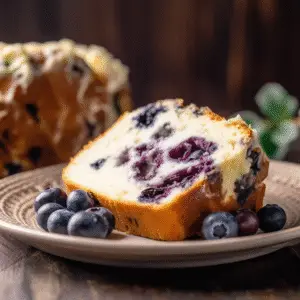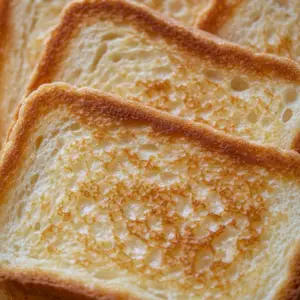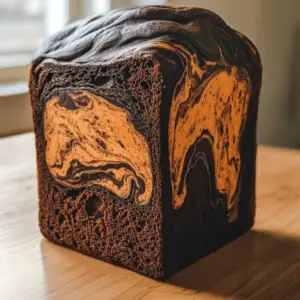In the delightful world of ice cream, the cone plays a crucial role in our enjoyment of this frozen treat. But often, we’re faced with a choice: the waffle cone or the sugar cone. This article delves into the nuances that set these two apart. From their ingredients and texture to their history and consumer preferences. We’ll explore each aspect in detail, offering a comprehensive guide to these beloved components of ice cream enjoyment.
Introduction to Ice Cream Cones
The Popularity of Ice Cream Cones
Ice cream cones, an iconic symbol of summer and joy, have captivated the hearts of sweet tooths worldwide. Their popularity isn’t just about taste; it’s a fusion of texture, convenience, and nostalgia. Whether it’s a stroll on the beach or a family outing, the ice cream cone is a staple of delightful experiences.
Overview of Waffle and Sugar Cones
At first glance, waffle cones and sugar cones might seem similar, but they’re as distinct as vanilla and chocolate. The waffle cone, known for its larger size and characteristic pattern, offers a unique texture and flavor. On the other hand, the sugar cone stands out with its crispiness and subtle sweetness. Making it a favorite for those who enjoy a sturdy, less messy experience.
In this journey through the world of ice cream cones, we’ll unravel the mysteries behind these two popular choices. From their humble beginnings to their current status as icons of ice cream culture. We’ll discover what makes each cone special and how they contribute to our ice cream experiences. So, let’s dive in and explore the fascinating world of waffle and sugar cones!
Understanding The Sugar Cone

Composition and Ingredients
The sugar cone is a marvel of simplicity and flavor. Its primary ingredients include flour, brown sugar, and occasionally molasses, which contribute to its rich, caramel-like sweetness. Some recipes also incorporate vegetable shortening and oat fiber, enhancing the cone’s crisp texture. Unlike its cousin, the waffle cone, sugar cones usually don’t contain eggs, making them a bit sturdier and less prone to crumbling.
Characteristics and Features
What sets the sugar cone apart is its durability and compact size. Designed to hold single or double scoops of ice cream, it’s the go-to choice for a no-fuss, tidy ice cream experience. Its structure is more resistant to sogginess, ensuring that every bite from start to finish is as enjoyable as the first. The sugar cone’s darker color and lattice pattern are not just for aesthetics; they’re a testament to its unique composition and baking process.
Historical Background
The sugar cone’s history is as rich as its flavor. It emerged as a popular choice in the early 20th century, offering an alternative to the softer, less durable cones of the time. Its mass production and ability to be stored for longer periods made it a hit, especially in ice cream parlors and at fairs. Today, it stands as a symbol of traditional ice cream enjoyment, a nod to the past while still being a favorite in the present.
Exploring the Waffle Cone

Composition and Ingredients
The waffle cone is a delightful blend of ingredients that come together to create a unique taste and texture. It typically consists of flour, sugar, eggs, butter, and milk. This combination, often enhanced with vanilla or cinnamon, gives the waffle cone its distinctive sweet flavor and soft, chewy texture. Unlike the sugar cone, the inclusion of eggs in the waffle cone recipe contributes to its lighter, more delicate structure.
Distinctive Qualities
Waffle cones are celebrated for their larger size and characteristic pattern, reminiscent of waffles. This design not only adds to the visual appeal but also provides a more flexible structure. Perfect for holding multiple scoops of ice cream and a variety of toppings. The waffle cone’s texture is less crunchy than the sugar cone, offering a unique mouthfeel that complements the creaminess of ice cream.
Origin and Evolution
The waffle cone’s history is intertwined with innovation and serendipity. It is said to have originated at the 1904 World’s Fair when an ice cream vendor ran out of dishes and improvised by rolling waffles into cones. This ingenious solution quickly gained popularity, evolving into the waffle cone we know today. Over the years, the waffle cone has become a symbol of creativity in ice cream consumption, often made fresh in-house at ice cream parlors for an added touch of indulgence.
Waffle Cone vs. Sugar Cone : A Detailed Comparison
Physical Differences
The most apparent distinction between waffle cones and sugar cones lies in their physical appearance and structure. Waffle cones are typically larger, with a patterned texture akin to waffles, and have a more irregular, rounded edge. In contrast, sugar cones are smaller, sturdier, and characterized by a uniform shape with a flat brim. This difference in size and shape influences how each cone holds ice cream and toppings.
Flavor and Texture Contrast
Flavor-wise, waffle cones often have a sweeter, more pronounced taste due to the inclusion of eggs and butter in their recipe. They are softer and chewier, providing a contrast to the creamy texture of ice cream. Sugar cones, on the other hand, offer a subtler sweetness, with a crispier texture that many find satisfying to bite into. The choice between the two often comes down to personal preference for sweetness and crunch.
Production and Availability
In terms of production, sugar cones are more likely to be mass-produced and widely available in stores due to their longer shelf life and sturdier nature. Waffle cones, while also available pre-made, are frequently prepared fresh in ice cream shops, adding a homemade touch to the ice cream experience. This difference in production methods contributes to the unique qualities of each cone type.

Consumer Choices and Preferences
Popularity Trends
When it comes to choosing between waffle cones and sugar cones, consumer preferences can vary widely, often influenced by regional tastes, childhood memories, and personal palate. Some ice cream aficionados swear by the classic crunch of a sugar cone, while others prefer the soft, sweet embrace of a waffle cone. The popularity of each cone type also sees fluctuations with trends in the ice cream industry, such as the rise of artisanal ice cream shops favoring freshly made waffle cones.
Factors Influencing Choice
Several factors play into this sweet decision. For some, it’s about the texture – the sturdy crunch of a sugar cone versus the gentle chew of a waffle cone. For others, it’s about flavor compatibility – how the cone complements the ice cream. Nutritional considerations also come into play, especially for those mindful of sugar intake or seeking gluten-free options. Lastly, the overall ice cream experience, whether seeking a nostalgic treat or a gourmet adventure, can influence the choice between a waffle and a sugar cone.

Nutritional Aspects
Caloric Content
When indulging in an ice cream cone, it’s worth considering the nutritional differences between waffle cones and sugar cones. Generally, waffle cones contain more calories due to their larger size and the inclusion of butter and eggs in the recipe. Sugar cones, being smaller and simpler in ingredients, typically have fewer calories. For those counting calories or managing dietary restrictions, this difference can be a deciding factor.
Health Considerations
Beyond calories, other health aspects come into play. Sugar cones often have a lower fat content compared to waffle cones. However, for those with dietary restrictions, such as gluten intolerance or egg allergies, the choice might be more clear-cut. It’s important to check the ingredients, as some sugar cones may contain gluten, and waffle cones usually contain eggs. Additionally, for those seeking a vegan option, sugar cones often fit the bill, whereas waffle cones with eggs and dairy do not.
Explore detailed nutritional information for sugar cones and other ice cream cones on Nutritionix.
Frequently Asked Questions
Common Queries About Waffle and Sugar Cones
In this section, we’ll tackle some of the most common questions people have about waffle and sugar cones. Providing clear and concise answers to these ice cream cone curiosities.
What’s the main ingredient difference between waffle and sugar cones ?
Waffle cones typically contain eggs and butter, giving them a richer flavor and softer texture. Sugar cones, on the other hand, usually lack eggs and have a simpler ingredient list, leading to their crispier texture.
Can I find gluten-free or vegan options for these cones?
Yes, there are gluten-free and vegan options available for both waffle and sugar cones. However, it’s important to read the labels carefully, as traditional recipes may contain gluten, eggs, or dairy.
Are waffle cones sweeter than sugar cones?
Despite their name, waffle cones are often sweeter than sugar cones due to the addition of flavors like vanilla or cinnamon and the use of butter and eggs.
Which cone is better for holding multiple scoops of ice cream?
Waffle cones are generally better for holding multiple scoops due to their larger size and slightly softer texture, which can accommodate more ice cream without breaking.
Do sugar cones have a longer shelf life than waffle cones?
Yes, sugar cones typically have a longer shelf life than waffle cones. Their lower moisture content and simpler ingredient list contribute to their durability and longer shelf life.
Are there any significant nutritional differences between the two?
Waffle cones usually have more calories and fat due to their richer ingredients. Sugar cones are a bit lighter in terms of calories and fat content.
In conclusion, whether you choose a waffle cone or a sugar cone largely depends on personal preference, dietary needs, and the type of ice cream experience you’re seeking. Both cones offer unique textures, flavors, and a delightful way to enjoy your favorite frozen treat.
Concluding Thoughts
Summary of Differences
As we’ve explored, the choice between a waffle cone and a sugar cone is more than just a matter of taste. It’s a decision influenced by texture, nutritional content, and personal preference. The waffle cone, with its rich flavor and soft texture, offers a luxurious ice cream experience. In contrast, the sugar cone provides a classic, crisp bite, perfect for those who enjoy a sturdy and less sweet option.
Personal Preference and Enjoyment
Ultimately, the decision between these two types of cones comes down to personal preference. Some may prefer the traditional, nostalgic feel of a sugar cone, while others might opt for the indulgent, homemade appeal of a waffle cone. Regardless of your choice, both cones serve the same delightful purpose – to enhance the joy of eating ice cream.
In the world of ice cream, the cone is more than just a vessel. It’s a part of the experience, a complement to the creamy, frozen treat it holds. Whether you’re a fan of the crunchy sugar cone or the soft waffle cone, each has its unique charm, adding an extra layer of pleasure to our ice cream indulgences.
So next time you’re at an ice cream shop, faced with the decision between a waffle cone and a sugar cone. Remember the journey we’ve taken through their differences and similarities. Choose the one that speaks to your taste buds and enjoy every bite of your ice cream adventure !

















































One Comment